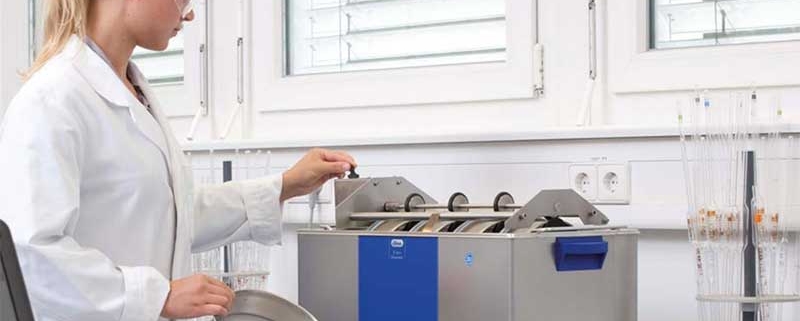Lab Test Sieve Cleaning with an Ultrasonic Cleaner
Cross-contamination is a constant concern in all laboratory practices and can be addressed by strict operating procedures to assure equipment is thoroughly clean before use. Thorough fine mesh lab sieve cleaning used in analytical, science and testing laboratories can be crucial in meeting GLP standards.
Lab sieves, because of their design, present special cleaning challenges to assure residues from prior screenings are completely removed from fine mesh screens.
Manually scrubbing the sieves is not a sure-fire means to clean them. A time-consuming operation in itself, the chief area of concern is potential contamination of subsequent products being processed because 100% of the particles may not be removed. Moreover, manually scrubbing fine mesh lab sieves can damage them.
Tovatech offers two options for ultrasonic sieve cleaning
One is the SRH 4/200 designed to be used in conjunction with a standard Elma ultrasonic cleaner with a size 300 tank, and the other is one of the uniquely designed Easy 50R or Easy 350R ultrasonic cleaners from Elma. These two cleaners can also be used for cleaning small instruments and for sample prep.
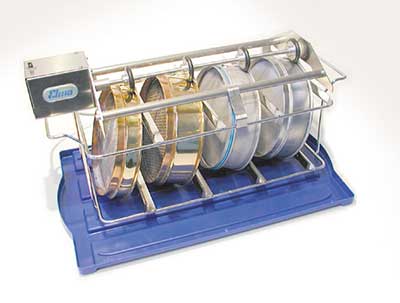
The Elma SRH 4/200 Cleans Up to 4 Fine Mesh Lab Sieves
Safely cleaning fine mesh sieves is achieved with Elma’s cleverly designed stainless steel SRH 4/200 sieve rotation holder. It is electrically powered and easily fits onto a 300 size Elmasonic ultrasonic cleaner, such as the heater-equipped EP300H or Select 300 ultrasonic cleaners.
Up to four 200 mm (8 inch) diameter lab equipment sieves from various manufacturers are placed into the unit much as plates are loaded into a dishwasher, and held in place by rollers. Once the sieves are clamped into the holder ultrasonic energy is applied while the sieves rotate into and out of the ultrasonic cleaning bath.
Ultrasonic cavitation produced by the EP300H or Select 300 generator-powered transducers creates billions of minute bubbles that implode vigorously against the screen mesh to quickly but safely dislodge trapped particles.
Positioning is the Key for Sieve Cleaning
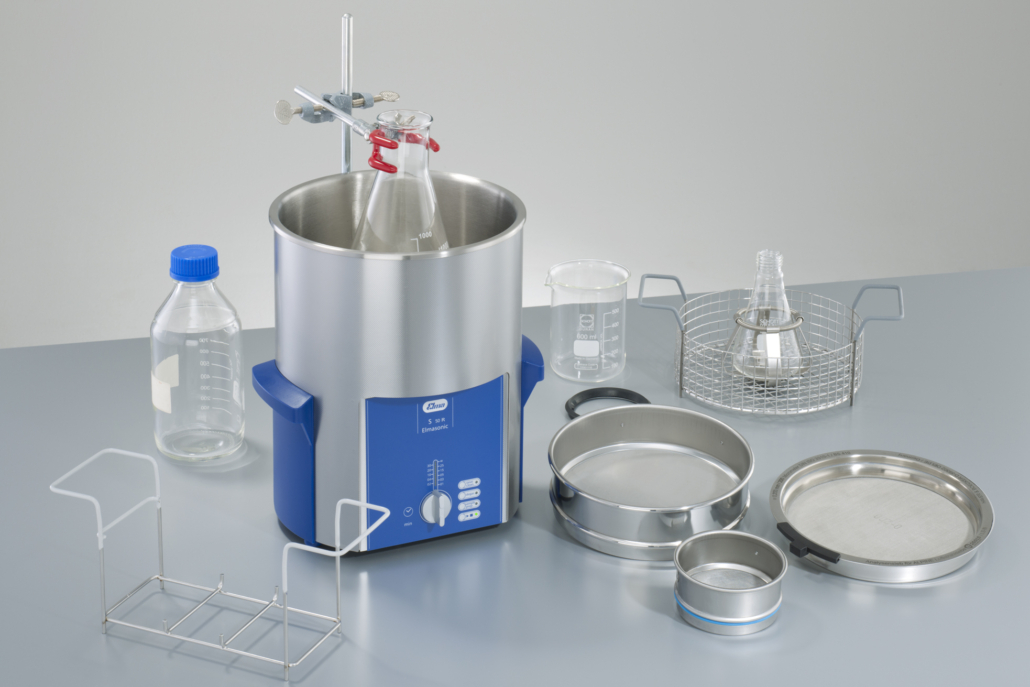
The key to superior ultrasonic cleaning performance is positioning the analytical sieves at an angle so that contaminants removed by cavitation action fall to the bottom of the ultrasonic cleaning tank and are not trapped in the laboratory sieves themselves. Rotation also adds a rinsing action to the cleaning operation.
When the ultrasonic cleaning process is complete, the entire unit is lifted from the tank and placed on a drain board for drying and reuse. But if the sieves are used in conjunction with insoluble particles a visual inspection should be made by laboratory personnel to see if they are geometrically locked in the mesh. If so a careful dislodging by manual brushing is required to remove them.
Summary of SRH 4/200 Ultrasonic Sieve Cleaner Features
- Sieve rotation provides fast, thorough cleaning
- Highly cost effective for cleaning multiple sieves; saves time and money
- Designed for 300 size Elmasonic ultrasonic cleaners
- Stainless steel construction for long service life
- Sweep mode for homogenous cleaning action
- Time and temperature control
- Extended utility for other laboratory cleaning requirements
Specially Designed Easy 50R and Easy 350R Ultrasonic Cleanbers for Sieve Cleaning
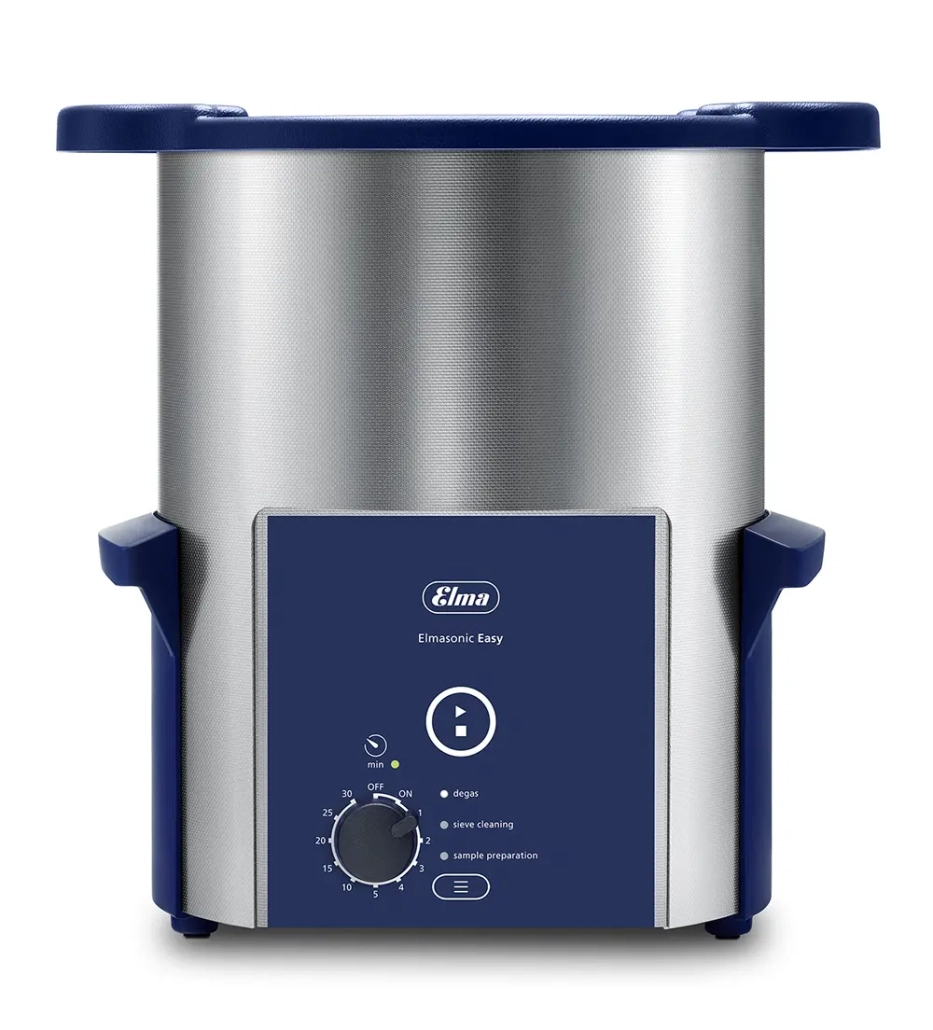
The powerful Elmasonic Easy 50R and Elmasonic Easy 350R round devices are used in the laboratory to thoroughly clean test sieves, prepare samples, and completely degas liquids.
Elma engineers determined that a round cleaning tank, in addition to matching sieve configurations, more thoroughly distributes ultrasonic cavitation throughout the cleaning solution. This desirable situation is further enhanced by the absence of drains that have been shown to diminish cavitation action in their vicinity.
Uniform distribution of cleaning action throughout the cleaning solution is achieved with the automatic Sweep mode, which is ideal for cleaning parts. Pressing the “Sieve Cleaning” button on the control panel activates the powerful Pulse mode to remove both soluble and insoluble particles from sieves.
The Elmasonic Easy 50R ultrasonic sieve cleaner has an internal tank diameter of 9.4 inches, a height of 5.5 inches and a cleaning solution capacity of approximately 1.5 gallons. Mesh baskets or holders for 200 mm (8 inch) and 100 mm (4 inch) diameter sieves can be ordered separately.
The Easy 350R has an internal tank diameter of 23.4 inches, a height of 9.6 inches and a cleaning solution capacity of approximately 18 gallons.
Other functions handled by these versatile ultrasonic sieve cleaners include solvent degassing and sample preparation.
Degassing, whether for HPLC solvents or for preparing fresh ultrasonic cleaning solutions, is accomplished by operating the cleaner in an on-off mode that causes air bubbles to form, rise and burst. This is achieved by selecting the “Degas” key to actively lift out gas bubbles.
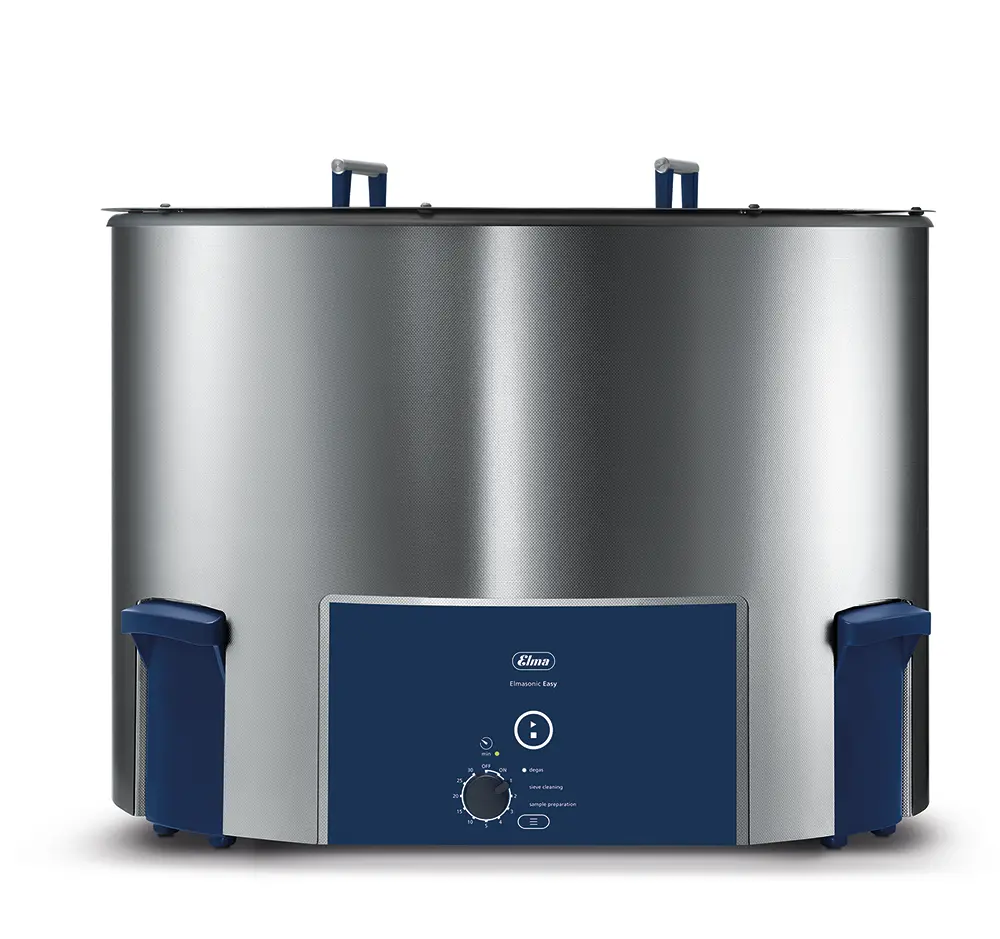
Dissolving samples and performing chemical extraction in a fast and safe manner are accomplished by selecting the “Sample Prep” key. This activates Dynamic mode which alternates Sweep and Pulse operation. Sample processing can take place in glass beakers fitted into a special cover or by suspending them at least one cm in the bath liquid.
The ultrasonic cleaners are fitted to accept an optional laboratory stand and clamp to hold flasks and solvent bottles in the center of the tank.
Contact Tovatech for Further Details on these Ultrasonic Sieve Cleaning Systems
We can address your specific laboratory needs drawing from our vast experience. For effective cleaning the ultrasonic cleaner must use the right cleaning chemistry, operate at the right temperature, and use the correct frequency. The material being cleaned, its tolerance for ultrasonic vibrations, and the type and degree of soil, determine this.
Call or chat with us and we will quickly help you identify the right combination and we can even suggest accessories that will enhance your cleaning process.

